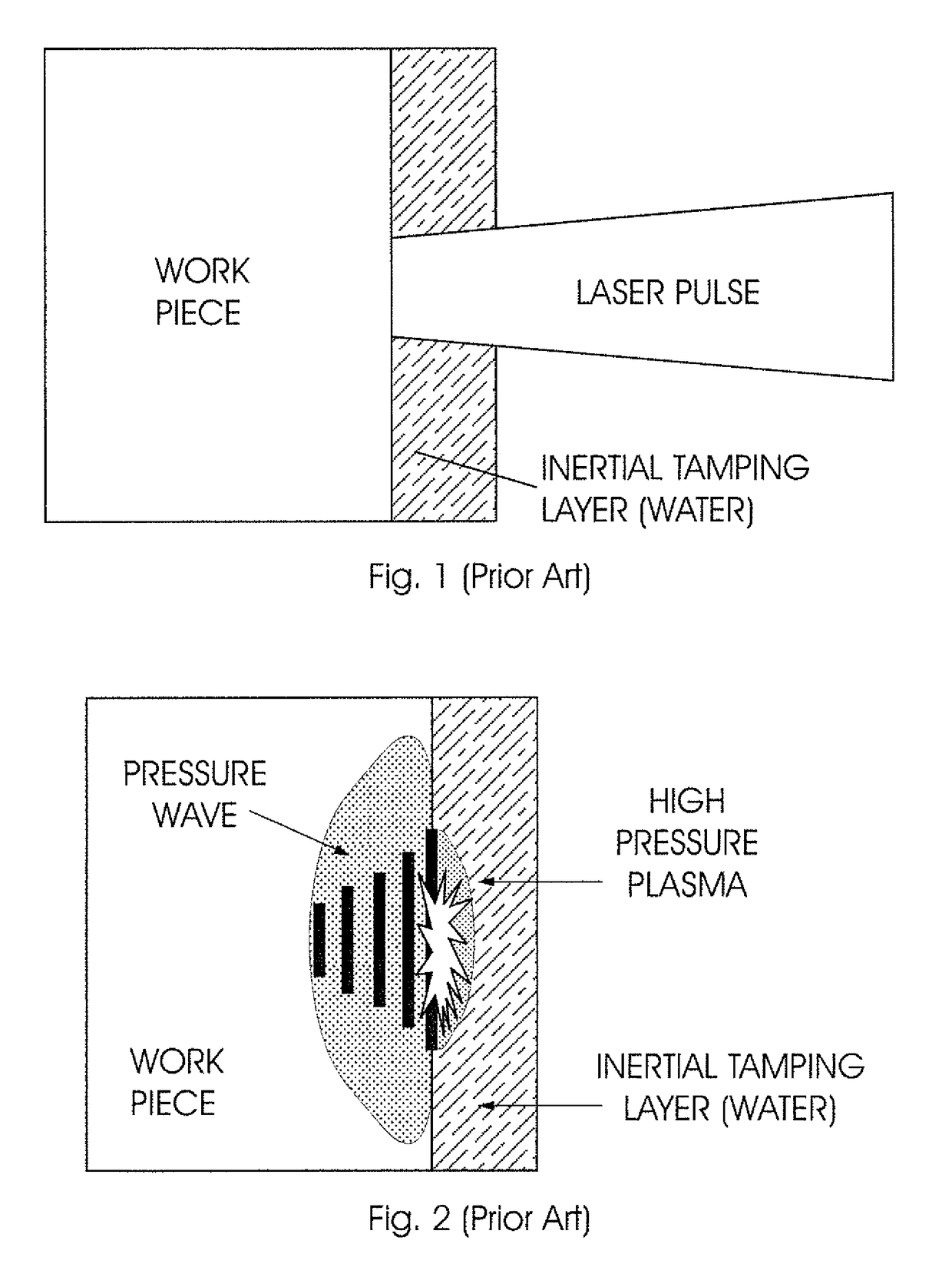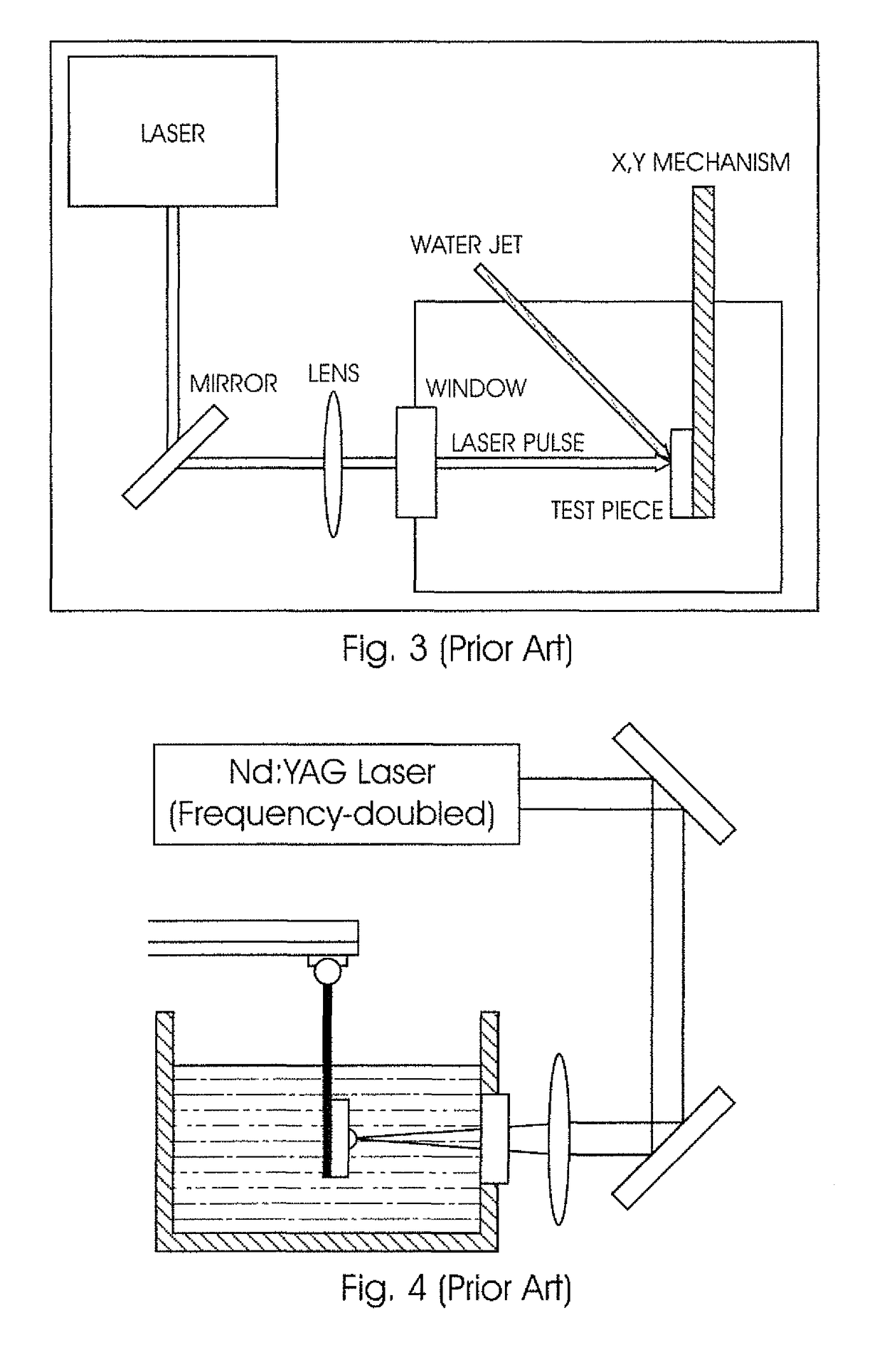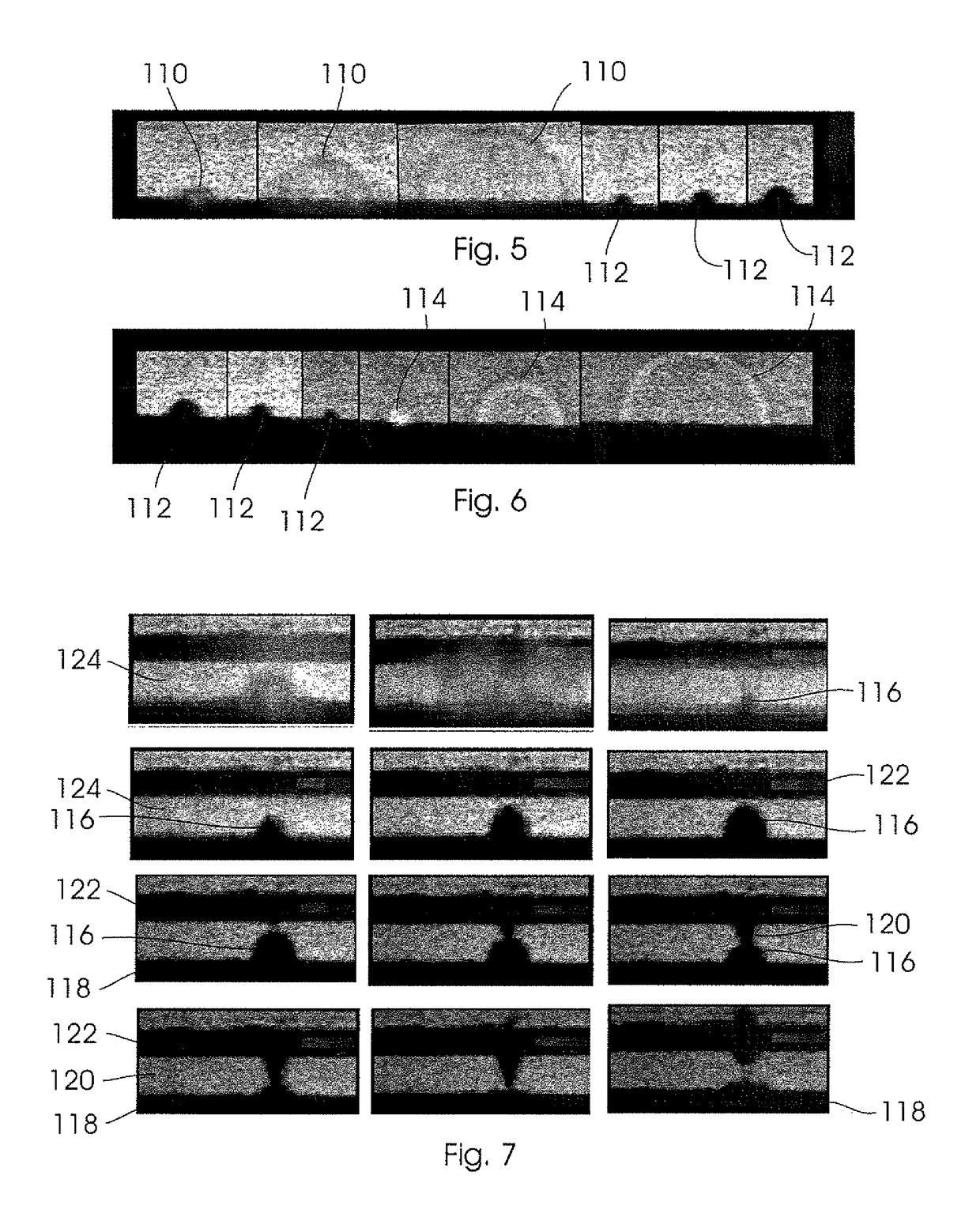System for and method of performing Laser Shock Peening on a target with a fluid flow path sandwiched between a transparent to laser light solid medium and the target
a laser shock and fluid flow path technology, applied in laser beam welding apparatus, manufacturing tools, welding apparatus, etc., can solve the problems of affecting the operative life of components, fatigue loads, plastically affected regions, and the depth and magnitude of plastically affected regions when using lsp far exceed those of conventional sp, so as to optimise the shock effect, reduce plasma, and accurate control of the thickness of confinement layer
- Summary
- Abstract
- Description
- Claims
- Application Information
AI Technical Summary
Benefits of technology
Problems solved by technology
Method used
Image
Examples
first embodiment
[0089]Referring to the drawings, in which like numerals indicate like features, a non-limiting example of a system for performing Laser Shock Peeing (LSP) on a target in accordance with the invention is generally indicated by reference numeral 10.
[0090]The system 10 has specifically been developed in the effort to induce a strong secondary shockwave or cavitation event by imposing a thick fluid layer over a surface 102 of a component being treated in the LSP process.
[0091]The system 10 includes a device for generating and transmitting a laser pulse to the target, which is indicated in FIG. 19 by the numeral 100. The device for generating and transmitting a laser pulse is not illustrated in FIG. 19 but is typically a laser capable of transmitting laser pulses, such as 1064 and 532 nm pulses, for example. In use, the laser would typically deliver a continues stream of laser pulses so as to create a laser beam, which is indicated by the numeral 12 in FIG. 19. The laser generating devic...
second embodiment
[0099]Yet another embodiment of the system according to the invention is illustrated in FIG. 21 in which it is indicated by the reference numeral 50. The system 50 is again similar to the system 10 and, again, like numerals indicate like features.
[0100]In this third embodiment of the system 50 the laser window is replaced by a lens 52. When using a laser window such as in the first and second embodiments of the system, the water cavity 26 needs to be long enough such that the focused beam incident on the laser window does not exceed its damage threshold. However, it has been found that it more desirable to keep the water cavity length 30 as short as possible, yet sufficient to obtain a secondary shockwave or cavitation event, in order to minimise water transmission losses. Therefore, the configuration of the third embodiment of the system 50 as illustrated in FIG. 21, addresses the problem of water transmission losses seeing that the laser beam incident upon the lens 52 is not focu...
third embodiment
[0101]In this third embodiment the system 50 includes a body 54 defines two inlets 56.1 and 56.2 feeding water into the fluid chamber 26. From FIG. 21 it can be seen that the fluid inlets 56.1 and 56.2 are located on opposite sides of the fluid chamber 26. It is envisaged that the water inlets 56.1 and 56.2 could be located radially opposite one another in the body 26.
[0102]Yet a further embodiment of the system according to the invention is illustrated in FIG. 21 in which it is indicated by the reference numeral 60. Again, like numerals indicate like features.
[0103]The system 60 in accordance with this fourth embodiment of the invention includes a body 62 which defines an internal cavity 64. As shown in FIG. 22, the internal cavity 64 is provided between two laser windows 66.1 and 66.2 which are located in the end regions of the body 62. An evacuated region is created between the two high power laser windows 66.1 and 66.1 in an attempt to prevent plasma breakdown of the laser pulse...
PUM
| Property | Measurement | Unit |
|---|---|---|
| thickness | aaaaa | aaaaa |
| temperature | aaaaa | aaaaa |
| thickness | aaaaa | aaaaa |
Abstract
Description
Claims
Application Information
 Login to View More
Login to View More - R&D
- Intellectual Property
- Life Sciences
- Materials
- Tech Scout
- Unparalleled Data Quality
- Higher Quality Content
- 60% Fewer Hallucinations
Browse by: Latest US Patents, China's latest patents, Technical Efficacy Thesaurus, Application Domain, Technology Topic, Popular Technical Reports.
© 2025 PatSnap. All rights reserved.Legal|Privacy policy|Modern Slavery Act Transparency Statement|Sitemap|About US| Contact US: help@patsnap.com



